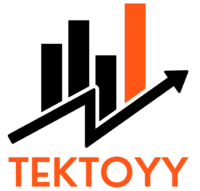In the world of investing, one piece of advice has stood the test of time: “Don’t put all your eggs in one basket.” This principle of diversification is the bedrock of sound financial planning, and nowhere is it more critical than in the dynamic, innovative, and highly volatile cryptocurrency market. While tales of investors striking it rich on a single meme coin capture headlines, the true path to sustainable, long-term success in digital assets lies in building a smart, well-diversified portfolio.
Simply buying a handful of different coins is not a strategy. True diversification is a methodical approach to managing risk while positioning yourself to capture growth across the entire, multifaceted crypto ecosystem. This guide will provide a clear, step-by-step framework for beginners and seasoned investors alike to construct a robust and resilient cryptocurrency portfolio built for the long haul.
Why Diversification in Crypto is Non-Negotiable

The cryptocurrency market is famously volatile. Prices can swing dramatically based on everything from macroeconomic news to a single tweet. Relying on the success of one or two assets is an incredibly high-risk gamble. A properly diversified portfolio is your first and best line of defense.
- Mitigating Extreme Volatility: Different sectors within the crypto market react differently to news and trends. While the price of a gaming token might be falling, a decentralized finance (DeFi) protocol could be thriving. By holding a mix of assets, the positive performance of some can help cushion the negative performance of others, leading to a smoother overall ride.
- Reducing Project-Specific Risk: Every crypto project carries its own unique risks. A promising new blockchain could suffer a critical bug, its development team could fail to deliver, or a competitor could simply outperform it. If you are all-in on that one project, its failure could be catastrophic for your capital. Diversification ensures that the impact of any single project’s failure is contained.
- Capturing Ecosystem-Wide Growth: The crypto industry is not just Bitcoin. It’s a sprawling ecosystem of innovation, including new financial systems (DeFi), virtual worlds (the metaverse), and foundational infrastructure (Layer 1s). A diversified portfolio allows you to invest in the growth of the entire digital asset space, rather than betting on a single, narrow segment to be the ultimate winner.
- Avoiding Emotion-Driven Decisions: A portfolio concentrated in one or two assets will experience wild swings, making it easy to panic-sell at the bottom or FOMO-buy at the top. A more stable, diversified portfolio helps you remain level-headed, stick to your strategy, and make rational decisions based on your long-term goals, not short-term price action.
The Core and Satellite Model: A Proven Portfolio Strategy
One of the most effective and widely used strategies for building a balanced portfolio is the Core-Satellite model. This approach provides a structured framework that balances relative safety with high-growth potential.
The Core (50-70% of Your Portfolio)
The “Core” of your portfolio should be allocated to the most established, liquid, and well-understood cryptocurrencies. These are the “blue chips” of the crypto world, with the longest track records and the largest market capitalizations. Their primary role is to provide a stable foundation for your entire portfolio.
- Bitcoin (BTC): As the original cryptocurrency, Bitcoin is the market leader and is often viewed as “digital gold”—a store of value and a hedge against inflation. It has the most secure and decentralized network and is the cornerstone of any serious crypto portfolio.
- Ethereum (ETH): Ethereum is much more than a currency; it’s a global, decentralized computing platform. It is the undisputed leader for smart contracts, powering the vast majority of applications in DeFi, NFTs, and Web3. Its importance to the broader ecosystem makes it an essential core holding.
The Satellites (30-50% of Your Portfolio)
The “Satellite” portion of your portfolio is where you can take on more calculated risks in pursuit of higher returns. These allocations are smaller positions spread across various emerging sectors and projects with high growth potential. These are your bets on the future of specific niches within the crypto economy. The exact percentage you allocate to satellites will depend on your personal risk tolerance.
Understanding Crypto Categories for Smart Diversification

To build an effective satellite portfolio, you must understand that not all altcoins are the same. Spreading your investment across different functional categories is the key to true diversification. Think of it like investing in different sectors of the stock market, such as tech, healthcare, and energy.
Here are the key crypto categories to consider for your satellite holdings:
1. Layer 1 Blockchains (The Foundation)
These are the fundamental blockchains that provide the underlying infrastructure for the entire crypto ecosystem. They are the base layer upon which decentralized applications are built. While Ethereum is the dominant Layer 1, several competitors aim to offer improvements in speed, cost, and scalability.
- Analogy: Think of them as competing operating systems like Apple’s iOS and Google’s Android.
- Examples: Solana (SOL), Cardano (ADA), Avalanche (AVAX).
2. Decentralized Finance (DeFi) Tokens (The New Financial System)
DeFi protocols aim to rebuild traditional financial services—like lending, borrowing, and exchanges—on the blockchain, making them open, permissionless, and transparent. Their tokens are often used for governance (voting on the protocol’s future) and sharing in revenue.
- Analogy: These are the “fintech” companies of the crypto world.
- Examples: Uniswap (UNI), Aave (AAVE), Lido (LDO).
3. Layer 2 Scaling Solutions (Making Blockchains Faster)
As Layer 1 blockchains like Ethereum become more popular, they can get congested and expensive. Layer 2 solutions are projects built on top of Layer 1s to process transactions more quickly and cheaply, enhancing the user experience.
- Analogy: They are like express toll lanes built on top of a busy highway.
- Examples: Polygon (MATIC), Arbitrum (ARB), Optimism (OP).
4. Metaverse and Gaming Tokens (The Digital Worlds)
This category includes cryptocurrencies and digital assets used within blockchain-based games and virtual worlds. These tokens can function as in-game currency, represent ownership of virtual land, or grant governance rights over the game’s development.
- Analogy: These are the currencies and economies of emerging digital nations.
- Examples: Decentraland (MANA), The Sandbox (SAND), Axie Infinity (AXS).
5. Oracles (Connecting Blockchains to the Real World)
Smart contracts on the blockchain cannot access real-world data on their own. Oracles are essential services that act as a secure bridge, feeding external information (like stock prices, sports scores, or weather data) to the blockchain so that smart contracts can use it.
- Analogy: They are the secure data providers for the entire blockchain economy.
- Example: Chainlink (LINK).
6. Stablecoins (The Safe Haven)
Stablecoins are cryptocurrencies pegged to a stable asset, most commonly the U.S. dollar. Their purpose is to hold a stable value, avoiding the volatility of other crypto assets. They play a crucial role in a portfolio for taking profits, earning yield in DeFi protocols, or as a temporary “cash” position during market turmoil.
- Examples: USD Coin (USDC), Tether (USDT).
Step-by-Step: How to Build Your Diversified Portfolio

- Define Your Risk Tolerance and Goals: Are you a conservative investor looking for steady growth, or an aggressive investor seeking maximum returns and comfortable with higher risk? Your answer will determine your Core vs. Satellite allocation. For example:
- Conservative Profile: 45% BTC, 25% ETH, 15% Other Layer 1s, 10% DeFi, 5% Stablecoins.
- Aggressive Profile: 30% BTC, 20% ETH, 20% Layer 1s, 15% Layer 2s, 15% Metaverse/Gaming.
- Do Your Own Research (DYOR): Once you have a target allocation, research individual projects within each satellite category. Don’t just buy a coin because it fits a narrative. Investigate its technology, use case, development team, tokenomics, and community strength.
- Purchase Your Core Holdings: Begin by establishing your core positions in Bitcoin and Ethereum through a reputable cryptocurrency exchange.
- Gradually Add Satellites with DCA: Don’t rush to buy all your satellite positions at once. Use the Dollar-Cost Averaging (DCA) strategy—investing a fixed amount of money at regular intervals—to build your positions over time. This mitigates the risk of buying everything at a market top.
- Secure Your Assets: For long-term holdings, security is paramount. Move your assets off the exchange where you bought them and into a personal wallet. A hardware wallet (like a Ledger or Trezor) provides the highest level of security.
Portfolio Management: The Art of Rebalancing
Building your portfolio is just the first step. To maintain its integrity over time, you must practice disciplined rebalancing.
What is Rebalancing? It is the process of periodically buying or selling assets to restore your portfolio to its original target allocation. For instance, if your Metaverse tokens perform exceptionally well and grow from 15% to 30% of your portfolio, you are now over-exposed to that sector. Rebalancing would involve selling some of those profits and using the proceeds to buy more of your underweight assets, like BTC or ETH.
This disciplined process forces you to systematically sell high and buy low. You can rebalance based on a schedule (e.g., every quarter) or by a percentage threshold (e.g., whenever any single holding deviates by more than 5% from its target).
Common Pitfalls to Avoid When Diversifying

- “Diworsification”: This is the mistake of owning too many assets. A portfolio with 50 different micro-cap altcoins is not diversified; it’s an unmanageable and speculative collection. Stick to a number of projects (e.g., 8-15) that you can reasonably research and track.
- Chasing Hype: Do not abandon your strategy to chase the latest coin that’s trending on social media. Hype-driven rallies are often unsustainable.
- Ignoring Correlation: Be aware that during major market-wide events, most cryptocurrencies tend to move in the same direction. Diversification mitigates risk, but it does not eliminate it.
- Forgetting Stablecoins: A 5-10% allocation to stablecoins is a powerful tool. It reduces overall portfolio volatility and provides you with “dry powder” to deploy and buy assets at a discount during market dips.
Building Your Financial Future in the Digital Age
Constructing a well-diversified cryptocurrency portfolio is the most prudent and proven strategy for navigating this exciting asset class. By using the Core-Satellite model, understanding the different categories of crypto assets, and practicing disciplined rebalancing, you can move beyond simple speculation. You can become a true investor, thoughtfully managing risk while positioning yourself to benefit from one of the most significant technological revolutions of our time.







